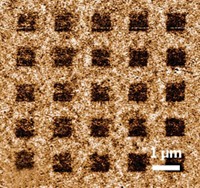Advertisement
Grab your lab coat. Let's get started
Welcome!
Welcome!
Create an account below to get 6 C&EN articles per month, receive newsletters and more - all free.
It seems this is your first time logging in online. Please enter the following information to continue.
As an ACS member you automatically get access to this site. All we need is few more details to create your reading experience.
Not you? Sign in with a different account.
Not you? Sign in with a different account.
ERROR 1
ERROR 1
ERROR 2
ERROR 2
ERROR 2
ERROR 2
ERROR 2
Password and Confirm password must match.
If you have an ACS member number, please enter it here so we can link this account to your membership. (optional)
ERROR 2
ACS values your privacy. By submitting your information, you are gaining access to C&EN and subscribing to our weekly newsletter. We use the information you provide to make your reading experience better, and we will never sell your data to third party members.
Materials
Nanotube squeeze play
May 29, 2006
| A version of this story appeared in
Volume 84, Issue 22
Controlled electron irradiation can transform multiwalled carbon nanotubes (MWNTs) into tiny high-pressure chambers, according to an international team led by Florian Banhart and Litao Sun of Germany's University of Mainz (Science 2006, 312, 1199). Irradiating an MWNT at high temperature knocks carbon atoms out of the material's characteristic carbon lattice. The nanotube restores this atomic network and heals itself by contracting, creating pressures up to 40 gigapascal within its core in the process. When Banhart and Sun's group filled the MWNTs with iron carbide or cobalt nanowires and irradiated the assembly, they found that the contracting tubes could squeeze the solid material like toothpaste through a tube (shown with an Fe3C nanowire). Because the technique uses transmission electron microscopy to induce the MWNT's self-compression, it offers researchers a way to directly observe pressure-induced atomic motion. This is in contrast with diamond anvil compression techniques, which rely on spectroscopic techniques to study materials under high pressure.




Join the conversation
Contact the reporter
Submit a Letter to the Editor for publication
Engage with us on Twitter